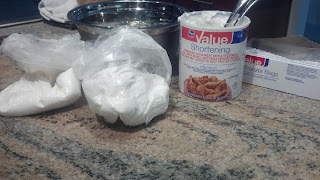Tuesday, July 31, 2012
Colors of the Arctic
Question: Will water temperatures be different if bags of water are covered in different colors of construction paper?
Hypothesis:
Zane predicts that red paper will cause the water to have the highest temperature. He predicts that black will make the water the lowest temperature.
Zoe predicts that the white paper will cause the water to have the highest temperature. Zoe predicts that black will make the water the lowest temperature.
Procedure:
1. Fill four bags with two cups of water each.
2. Cover each bag of water in a different color of paper (black, green, red, and white)
3. Wait 2 hours and check the temperature of each bag of water.
4. Write down the temperatures.
Results:
We measured the temperature of the bags of water. The water in the bag covered in white paper was 105 degrees Fahrenheit. The water in the green bag and the black bag was 112 degrees Fahrenheit. The water in the red bag was 110 degrees Fahrenheit.
Conclusion:
Our predictions were not supported by the results of this experiment. The water in the white bag had the lowest temperature after sitting in the sun for 2 hours. The water in the green bag and the black bag had the highest temperature after sitting in the sun for 2 hours.
Discussion:
The white paper may have reflected some of the sunlight instead of absorbing all the heat, the way the black and green and red papers did. Is the Arctic region cold because the white ice reflects sunlight and heat instead of absorbing it?
Monday, July 30, 2012
Blubber Glove Experiment
In the Arctic Ocean, blue whales swim in very cold water. They don't get cold because of their blubber, or fat.
Question: How long can we keep our hands in a bucket of ice water if we wear a blubber glove?
Hypothesis:
Zane predicts that he can keep his hand in ice water for 3 seconds without the blubber glove. He predicts he can keep his hand in the ice water forever with the blubber glove.
Zoe predicts that she can keep her hand in the ice water for 10 seconds without the blubber glove. She predicts that she can keep her hand in the ice water for 100 seconds with the blubber glove.
Procedure:
1.Fill a bucket with cold water and ice.
2.Fill a plastic bag with shortening (blubber).
3.Place one hand in the ice water and set a timer. Take the hand out of the ice water when it gets too cold.
4.Place one hand in the plastic bag filled with shortening. Set a timer and remove the hand when it gets too cold.
Results:
Zane kept his hand in the ice water for 6 seconds. Zoe kept her hand in the ice water for 14 seconds. With the blubber glove, Zane kept his hand in the ice water for 2 minutes and his hand did not get cold. Zoe kept her hand in the ice water for 2 minutes and 25 seconds and her hand did not get cold.
Conclusion:
The blubber glove kept our hands warm even in the ice cold water.
First Post-Arctic Region
This is an arctic fox. He lives in the Arctic region. He can survive in temperatures as low as -58 degrees Fahrenheit. Arctic foxes eat rodents, fish, and birds. His white fur camouflages him so that other animals can't see him in the snow. When the weather warms up and the snow melts, his fur changes to brown or gray.
Subscribe to:
Comments (Atom)


